The Working Principle and Advantages of Self-Drilling Rock Bolts
Time:2025-09-18From:sinorock View:
Self-drilling rock bolts offering a streamlined solution for stabilizing challenging ground conditions. By integrating drilling, grouting, and anchoring into a single operation, these innovative bolts eliminate the limitations of traditional anchoring systems, such as hole collapse in unstable formations. This article explores the working principle of self-drilling rock bolts, detailing their mechanics and advantages.
Working Principle of Self-Drilling Rock Bolts
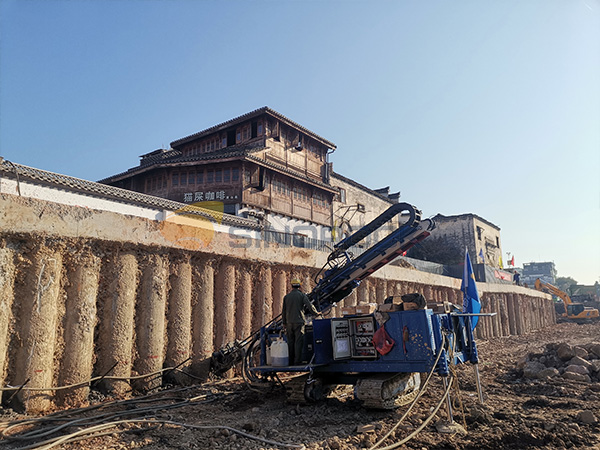
Self-drilling rock bolts operate on an integrated system that combines drilling, grouting, and anchoring into a single efficient process. At the core is a hollow, threaded steel bar equipped with a sacrificial drill bit at the tip. This design allows the SDA bolt to serve dual purposes: as a drill rod during penetration and as an anchor once installed. The process begins with the rock bolt being rotated and advanced into the ground using a rotary percussion drill rig, typically at speeds of 100-200 rpm, while flushing debris through the hollow bar with water or air. As the rock bolt drills, it creates its own threaded pathway, eliminating the need for pre-drilling, which is particularly advantageous in unstable or fractured formations where boreholes might collapse.
Once the desired depth is reached, grout—often a cement-based mixture with a water-cement ratio of 0.4-0.5—is injected through the hollow bar under pressure. This grout fills voids, bonds the SDA bolt to the surrounding rock or soil, and enhances load transfer. The grout expands radially, consolidating cracks and weak zones, while the external threads provide mechanical interlock. For energy-absorbing variants, the SDA bolt can deform under dynamic loads, such as in seismic areas, by yielding controlled amounts without failure. Components like couplers, nuts, bearing plates, and centralizers ensure stability and even load distribution.

In essence, the working principle relies on immediate stabilization: the SDA bolt transfers tensile forces from unstable layers to competent strata, preventing deformation or collapse. This makes SDA bolts superior to traditional rock bolts, which require stable holes and separate steps, reducing installation time by up to 50% in challenging conditions.
The mechanics involve both friction and bonding. During the construction process, the grout creates full-length bonded anchoring. Testing, such as pull-out tests, verifies the ultimate load capacity, often exceeding 200 kN depending on diameter (e.g., R25 to R51). Corrosion-resistant coatings extend lifespan in humid environments, ensuring long-term performance in geotechnical applications.
The Core Principle Explained
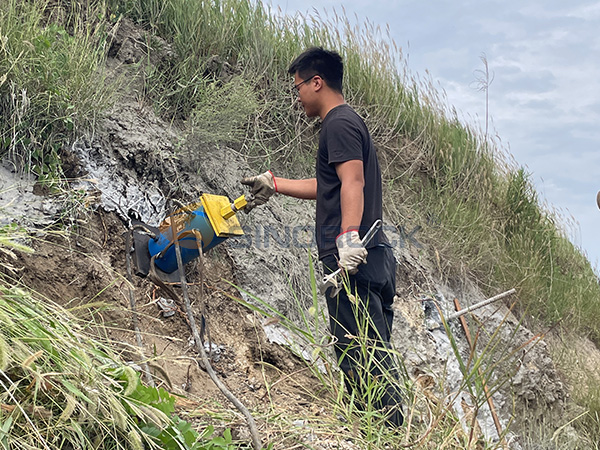
At the heart of the working principle of self-drilling rock bolts is their ability to integrate drilling and anchoring in one operation. This eliminates common issues like hole collapse in weak ground, ensuring consistent performance. Let's break it down:
Drilling Phase
The bolt is attached to a rotary-percussive drill rig. As the drill rotates and advances, the threaded exterior of the hollow bar cuts into the rock, creating a self-tapping hole. The sacrificial drill bit leads the way, pulverizing material while the hollow core flushes debris with water or air. This phase mimics a standard drill string but leaves the bolt in place—no withdrawal needed.
Grouting Phase
.jpg)
Once the desired depth is reached (typically 2-6 meters, extendable), cement grout is pumped through the hollow bar under pressure. The grout exits via ports near the tip, filling the annular space around the bolt and permeating fractures in the rock. This creates a uniform bond, transferring loads from the rock mass to the bolt via shear resistance.
Anchoring and Load Transfer
As the grout cures, the bolt becomes a composite reinforcement element. When the surrounding rock deforms (e.g., due to excavation stress), the force is transmitted through the grout to the threaded bar. The external threads enhance grip, while the nut and plate at the surface provide immediate tensioning. In dynamic conditions, the system absorbs energy through elastic deformation.
This integrated process—drilling, grouting, and tensioning—relies on hydraulic pressure for grout distribution, ensuring even penetration into soil or rock pores. In cohesive soils, the grout forms a bulbous anchor; in fractured rock, it seals cracks for added stability.
Why Choose Self-Drilling Rock Bolts?
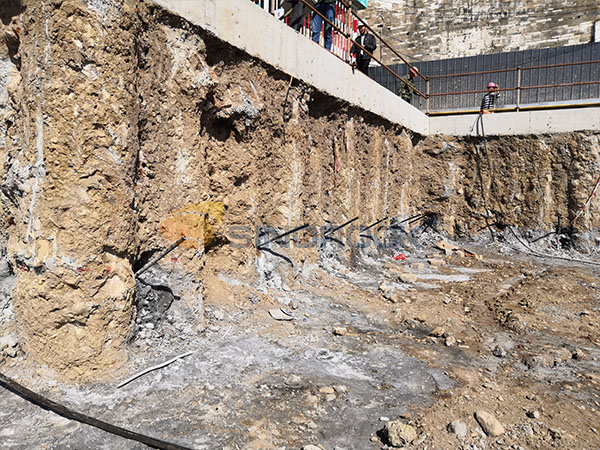
Self-drilling rock bolts offer significant advantages over traditional anchors. Their single-pass operation seamlessly integrates drilling, grouting, and anchoring, saving 30-50% of the time compared to pre-drilled systems, greatly enhancing construction efficiency. In complex environments like soft soils, fractured rock, or overhead applications, self-drilling bolts eliminate concerns about hole collapse, demonstrating exceptional versatility. Additionally, reduced labor and equipment needs lower project costs, improving economic efficiency. Corrosion-resistant coatings ensure durability in harsh conditions, while the rapid installation process significantly minimizes safety risks in unstable ground.
Whether you're working on tunnel, mining, or slope stabilization projects, SDA bolts deliver reliable, long-lasting performance. Discover how self-drilling rock bolts can enhance your construction efficiency and safety. Contact SINOROCK geotechnical experts today for a customized solution tailored to your project!
latest news
-

- The Working Principle and Advantages of Self-Drilling Rock Bolts
- Time:2025-09-18From:This Site
- Discover the working principle of self-drilling rock bolts, explore their advantages and applications. Learn SDA bolts how streamline drilling, grouting, and anchoring for efficient ground stabilization in tunneling, mining, and slope projects.
- View details
-
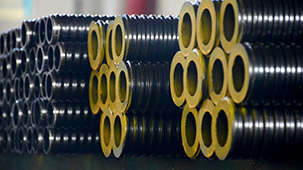
- Self-Drilling Rock Bolts for Unstable Ground Support
- Time:2025-09-11From:This Site
- Learn self-drilling rock bolt applications, cases, and tips for selecting trusted manufacturers. Discover how they provide reliable support for unstable ground in tunneling, mining, and slope stabilization.
- View details
-
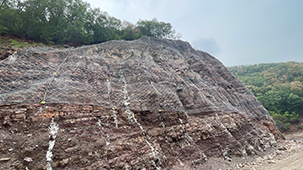
- The Best Choice for Slope Stability Reinforcement
- Time:2025-08-28From:This Site
- Discover why self-drilling anchor bolts excel in slope stability reinforcement! Compare with traditional methods, learn their applications, benefits, and solutions for challenging terrains.
- View details
-
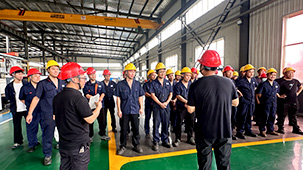
- Sinorock 2025 Quality Month | Strengthening Quality Foundations, Empowering Product Excellence
- Time:2025-08-13From:This Site
- Sinorock’s 2025 Quality Month, themed “Strengthening Quality Foundations, Empowering Product Excellence,” successfully concluded, reinforcing our commitment to superior product quality.
- View details
-
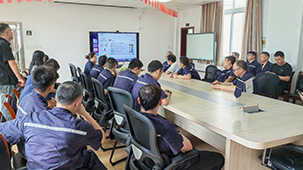
- Sinorock Safety Month 2025 | Everyone Speaks Safety, Everyone Can Respond
- Time:2025-07-03From:This Site
- Sinorock Safety Month 2025, centered on the theme "Everyone Speaks Safety, Everyone Can Respond - Spot Workplace Hazards," has wrapped up successfully!
- View details
-
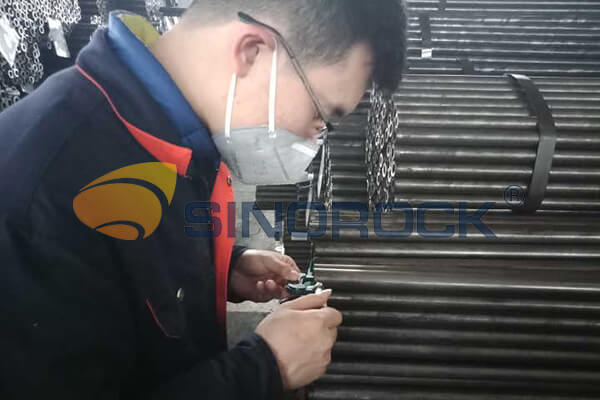
- Quality Control: the Vital Factor of A SDA Bolt Factory
- Time:2025-01-09From:This Site
- Sinorock’s comprehensive quality control system, from supplier management to outgoing inspections, ensuring the highest standards for self-drilling anchor bolts in construction.
- View details
-

- SINOROCK to Showcase Innovative Mining Solutions at Mining and Metals Central Asia 2025
- Time:2025-09-09From:This Site
- We are pleased to share that SINOROCK will participate in the Mining and Metals Central Asia 2025, taking place from September 17 to 19 at the Atakent International Exhibition Centre in Almaty, Kazakhstan. You can find us at Booth 11-231.
- View details
-

- Sinorock Invites You to Explore Proven Self-Drilling Anchor Bolt Solutions at bauma 2025
- Time:2025-03-07From:This Site
- From April 7–13, 2025, explore Sinorock’s Self-drilling anchor bolt solution at Booth C2.513/4 in Hall C2 of the Messe München Exhibition Center (Munich, Germany).
- View details
-
.jpg)
- SINOROCK to Attend EXPOMINA PERÚ 2024 in Lima, Peru
- Time:2024-08-10From:This Site
- Sinorock to Attend EXPOMINA PERÚ 2024 in Lima, Peru
- View details
 Download
Download 


